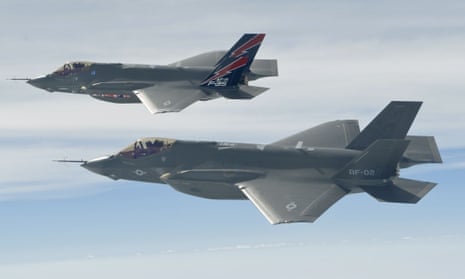The much maligned F-35 Joint Strike Fighter has yet another problem with its software: the radar stops working requiring the pilot to turn it off and on again.
The Lockheed Martin plane, which has been in development since 2001 and is the most software-driven warplane ever built, has experienced several failures and setbacks that have seen its cost balloon and its delivery delayed. Each jet is now expected to cost about £100m.
From structural problems that made it vulnerable to lightning strikes – ironic given it’s called the Lightning II – to weight issues, bugs within its software and its complete lack of cyber security testing, the plane has caused concern among the UK, US and other buyers. And now a glitch with the radar, which appeared late last year, could potentially hinder its performance against less developed fighter jets.
US air force major general Harrigian told analyst firm IHS Jane’s: “What would happen is they’d get a signal that says either a radar degrade or a radar fail – something that would force us to restart the radar.
“Lockheed Martin discovered the root cause, and now they’re in the process of making sure they take that solution and run it through the [software testing] lab.”
The bug fixes for the planes are expected to be delivered to the USAF by the end of March. But others, including Keith Joiner, who is responsible for evaluating the plane’s performance for the Australian defence force, are looking to stop or delay further orders.
Joiner told Radio National Background Briefing: “Some systems like the radar control are fundamentally worse than the earlier version, which is not a good sign.
“The next software version is block 4. It won’t be available until 2020. So there’ll be nothing but fixing bugs in the original software between 2013 and 2020.”
While flight performance is one concern being addressed by software updates, the mostly software-driven plane also has yet to be tested for resistance to hacking, something that could be a real possibility with cyber warfare an increasing threat across the world.
Joiner said: “The only system that has done cyber security, vulnerability and penetration testing is the logistics software. So ordering spares. And it didn’t go very well.”
Previous issues with the F-35 and its three variants have seen it grounded by the USAF over concerns with the engine after a fire, which also prevented the jet from participating in the naming ceremony of the HMS Queen Elizabeth aircraft carrier that is expected to take a full complement of 36 F-35s coming into service in 2018.
